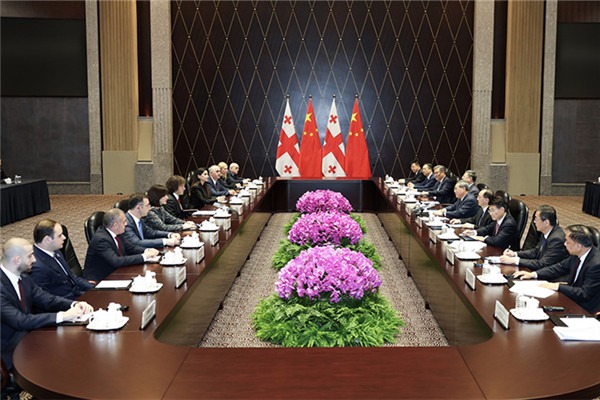Stronger health risk controls urged as Sichuan reports first HIV-2 case

Sichuan province has reported its first case of HIV-2 infection, marking a rare public health event in China. The finding, recently published in the Chinese Journal of AIDS & STD, has prompted experts to call for stronger public health risk management and greater corporate involvement in addressing rare infectious diseases.
According to the report, the case involved a 67-year-old woman from the prefecture-level city of Meishan who was diagnosed earlier this year.
On Dec 30, 2024, during a routine community health screening, her initial HIV antibody test returned reactive results. A subsequent confirmatory test using the Western blot method showed strong bands indicative of HIV-2, while an HIV-1 nucleic acid test returned negative.
A second blood sample was collected soon after, with results consistent with the first. After verification that the case was new and the patient had no history of antiretroviral therapy, investigators classified it as a suspected HIV-2 infection.
To confirm the finding, the blood sample was sent to the Sichuan Center for Disease Control and Prevention, where further HIV-1/HIV-2 antibody differentiation, nucleic acid testing, sequencing and phylogenetic analysis were performed. The results confirmed a diagnosis of HIV-2 antibody positivity, establishing the first documented HIV-2 case in the province since its first HIV report in 1992.
An epidemiological investigation revealed that the patient had sexual contact with a man in Hunan province who was initially diagnosed with HIV-1 in 2017, later reclassified as HIV-2 in 2023, and died three years ago.
One researcher noted that "it is difficult to directly determine the exact source of infection based solely on a single gene fragment and molecular network analysis."
HIV-2, which is more prevalent in West Africa, remains extremely rare in China. Like HIV-1, it spreads primarily through unprotected sexual intercourse, blood exposure and mother-to-child transmission. However, genetic and structural differences make HIV-2 less transmissible and slower to progress.
Researchers emphasized that diagnostic challenges remain a major obstacle in HIV-2 prevention and control.
"In the absence of a commercial HIV-2 nucleic acid test kit, sequencing and phylogenetic comparison play an important supplementary role during the serological window and late diagnostic stages," the study noted. "However, the low viral load of HIV-2 can affect sequencing results, and most laboratories lack the capacity for timely sequencing and genetic analysis."
Zhang Linqi, a professor at the School of Basic Medical Sciences at Tsinghua University, said HIV-2 infections are very uncommon in China.
"The number of cases is extremely small, its transmissibility is relatively weak and its fatality rate is lower compared to HIV-1," Zhang said.
He added that clinical treatment for HIV-2 differs significantly from that used for HIV-1.
"China's 'Four Frees and One Care' policy for HIV/AIDS is not directly applicable to HIV-2 treatment," Zhang said. "While this patient could, with her consent, be included under existing HIV-1 treatment programs, this would be an individual exception rather than a standard management protocol."
The policy provides free antiretroviral therapy for rural and low-income patients, free voluntary testing and counseling, free prevention of mother-to-child transmission services, school fee exemptions for children orphaned by AIDS and government welfare support for affected families.
As a rare disease, HIV-2 poses additional challenges for drug development and clinical research.
"Because HIV-2 affects only a small number of people, the cost-benefit ratio for pharmaceutical development is poor. It is also difficult to find eligible participants for clinical trials," Zhang said. "This reflects the common dilemma faced by rare diseases."
Although HIV-2 spreads less efficiently than HIV-1, it similarly attacks the immune system, damaging lymphocytes and leaving individuals vulnerable to opportunistic infections. Both viruses mutate rapidly, producing new variants that make immune clearance difficult.
"HIV-2 is an infectious disease," Zhang said. "If not properly managed, it can evolve from a medical issue into a social one. That is why the government should encourage enterprises to step forward and take on this social responsibility."
Multiple medical experts stressed that AIDS is preventable and controllable, and the public should avoid panic while strengthening scientific awareness and personal protection. They called for enhanced health education on safe sex practices among older adults, noting that the Sichuan case underscores the need for targeted public outreach to reduce the risk of HIV transmission in aging populations.
- Stronger health risk controls urged as Sichuan reports first HIV-2 case
- Census finds 103 fish species in Haihe River's main stream
- Zimbabwean physician acts as ambassador for TCM
- China's Mars orbiter observes interstellar object 3I/ATLAS
- Graduates diversify career paths
- Hong Kong sci-tech forum gathers young scientists amid innovation hub drive




































